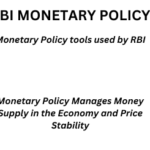Is India’s Humanitarian Diplomacy Elevating Its Global Soft Power?

India extending humanitarian Diplomcy aid worldwide, has a long history. The latest one is in Myanmar. India launched Operation Brahma in Myanmar, providing critical relief after a devastating earthquake killed over 2,000 people.
Humanitarian Diplomacy
- In 1959, India provided relief to Tibetan refugees fleeing China, and during the 1970s, it assisted Bangladesh in recovering from repeated cyclones and famine. During Sri Lanka’s decades-long civil war, India also contributed to relief and reconstruction efforts.
- India sent emergency relief after Turkey’s devastating 2023 earthquake.
- 2004 when the Indian Ocean tsunami swift response in assisting Sri Lanka, the Maldives, and Indonesia established its reputation as a reliable first responder
- During the Nepal earthquake, India launched Operation Maitri, deploying rapid-response teams
- Over time, India expanded its operations, providing aid to Pakistan, Nepal, Sri Lanka, Afghanistan, and even China.
Humanitarian assistance diplomacy; Soft Power
India has positioned itself as a major global player in disaster/ Humanitarian assistance diplomacy. Using humanitarian aid as a strategic tool to strengthen its geopolitical reach and international relationships.
From the 2004 tsunami to the 2025 Myanmar earthquake, India has systematically built its capacity as a first responder.
First, it enhances India’s global stature, reinforcing its image as a rising power capable of responding to crises from Japan to Turkey. Second, it strengthens bilateral relationships
The aid is the vital instrument in advancing its geopolitical ambitions.
Moreover humanitarian solidarity transcends political animosities
India positioned itself as a compassionate force—a nation that prioritizes human lives over political rivalries.
the National Disaster Management Act in 2005, leading to the creation of the National Disaster Response Force (NDRF). With eight battalions trained in disaster response, the NDRF became the backbone of India’s humanitarian outreach.
India is positioning itself to meet this challenge, reinforcing its role as a leading provider of humanitarian aid and security.
Traditional power politics often revolve around military might and economic leverage. In contrast, humanitarian aid, by its very nature, softens adversarial stances and humanizes interstate interactions
It act is central to India’s broader geopolitical strategy—using humanitarian engagement to pave the way for political negotiations and conflict resolution.
India is sending a powerful signal about the interconnected nature of modern global challenges. It is an acknowledgment that in a world fraught with transnational threats, humanitarian considerations must take precedence over ideological differences.
It reinforces the notion that global challenges require collective action. This is particularly significant for India, whose rise on the world stage is increasingly tied to its ability to forge inclusive partnerships.
India can consolidate its role as a regional stabilizer and a compassionate global leader. True to India’s rich culture and philosophy of “Vasudhaiva Kutumbakam. Meaning the “world is one family. enhanced India’s soft power through swift and effective disaster response operations.
As natural disasters become more frequent, India’s disaster diplomacy will remain a crucial instrument of its global strategy. Will improve political ties as well as transform the image of a country.
India’s disaster relief efforts, like Operation Dost during the Turkey earthquake, are a key component of its soft power. Soft power resources such as media, public diplomacy, educational and cultural exchange programs, aids on development of military cooperation – such as disaster aids, training and collaboration exercise, and governmental credibility in disaster management
India’s soft power is usually linked with concepts like yoga or Bollywood and, lately, cultural elements such as Indian cuisine and spirituality
The capacities of India‟s humanitarian assistance and disaster relief (HADR) institutionalised in the wake of the 2011 tsunami disaster
HADR has provided prompt humanitarian aid and emerged as a responsible global actor during the Pakistan Floods (2022), Afghanistan Famine (2022), Ukraine War (Operation Ganga, 2022), Yemen Airlift (2015), Nepal Earthquake (2015), Sri Lanka (2004) and several other United Nations Peace Keeping in Congo, Sudan, etc.








0 Comments